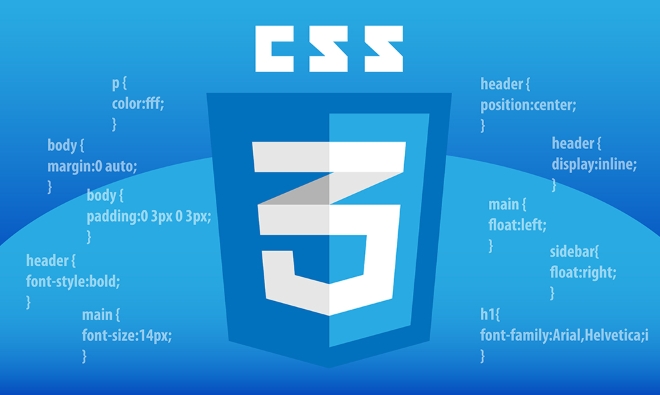 Web Front-end
Web Front-end
 CSS Tutorial
CSS Tutorial
 What is the difference between ^=, $=, and *= in attribute CSS Selectors?
What is the difference between ^=, $=, and *= in attribute CSS Selectors?
What is the difference between ^=, $=, and *= in attribute CSS Selectors?
Jul 04, 2025 am 03:09 AMIn the CSS attribute selector, the difference between ^=, $= and \*= is that the matching attribute values ??are different. ^[attr^="value"] matches attributes that start with a specified value, such as a[href^="https"] selects all links that start with "https"; ^[attr$="value"] matches attributes that end with a specified value, such as a[href$=".pdf"] selects all links that end with ".pdf"; ^[attr="value"] matches elements that contain the specified substring in the attribute value, such as img[src="cat"] selects src with "cat", regardless of the location. The three are used to accurately locate the beginning, end or any position of the attribute value.

If you've ever looked at CSS attribute selectors and wondered what the difference is between ^= , $= , and *= , you're not alone. These symbols might look similar at first glance, but they actually do very different things when matching elements based on attribute values.

[attr^="value"] – Starts With
This selector matches elements where the specified attribute starts with the given value.

For example:
a[href^="https"]
This would target all anchor tags whose href starts with "https" , which is handy if you want to style secure links differently — like adding a lock icon or changing the color.

? A common use case:
- Highlight external links
- Target specific file types (eg,
[src^="img/logo"])
Just remember, it's about the beginning of the string — not the whole thing.
[attr$="value"] – Ends With
This one does the opposite of ^= — it matches attributes that end with a certain value.
Example:
a[href$=".pdf"]
This targets any link that ends in .pdf . It's super useful for applying styles to downloadable files — maybe you want to add a small PDF icon next to those links.
?? One thing to watch out for:
- It must match the exact ending
- So
file.pdf?version=1wouldn't match[href$=".pdf"]
It's great for filtering by file extensions or specific endings without needing extra classes.
[attr*="value"] – Contains
This selector is more flexible — it matches elements where the attribute contains the value anywhere within it.
Say you have:
img[src*="cat"]
This would match any image tag where the src includes "cat", like cat.jpg , kitten-cat.png , or even category.jpg .
? But be careful — this can be too broad.
- It matches any occurrence of the substring
- Not just full words or exact patterns
It's useful when you want to apply styles to a group of related items without having to list them all.
So yeah, the main differences come down to where in the string the match occurs:
-
^=checks the beginning -
$=checks the end -
*=looks anywhere inside
They're subtle but powerful tools once you know how each behaves.
The above is the detailed content of What is the difference between ^=, $=, and *= in attribute CSS Selectors?. For more information, please follow other related articles on the PHP Chinese website!

Hot AI Tools

Undress AI Tool
Undress images for free

Undresser.AI Undress
AI-powered app for creating realistic nude photos

AI Clothes Remover
Online AI tool for removing clothes from photos.

Clothoff.io
AI clothes remover

Video Face Swap
Swap faces in any video effortlessly with our completely free AI face swap tool!

Hot Article

Hot Tools

Notepad++7.3.1
Easy-to-use and free code editor

SublimeText3 Chinese version
Chinese version, very easy to use

Zend Studio 13.0.1
Powerful PHP integrated development environment

Dreamweaver CS6
Visual web development tools

SublimeText3 Mac version
God-level code editing software (SublimeText3)

Hot Topics
 How can I include CSS only on some pages?
Jun 11, 2025 am 12:01 AM
How can I include CSS only on some pages?
Jun 11, 2025 am 12:01 AM
There are three ways to selectively include CSS on a specific page: 1. Inline CSS, suitable for pages that are not frequently accessed or require unique styles; 2. Load external CSS files using JavaScript conditions, suitable for situations where flexibility is required; 3. Containment on the server side, suitable for scenarios using server-side languages. This approach can optimize website performance and maintainability, but requires balance of modularity and performance.
 Flexbox vs Grid: Understanding the Key Differences in CSS Layout
Jun 10, 2025 am 12:03 AM
Flexbox vs Grid: Understanding the Key Differences in CSS Layout
Jun 10, 2025 am 12:03 AM
Flexboxisidealforone-dimensionallayouts,whileGridsuitstwo-dimensional,complexlayouts.UseFlexboxforaligningitemsinasingleaxisandGridforprecisecontroloverrowsandcolumnsinintricatedesigns.
 Creating an Auto-Closing Notification With an HTML Popover
Jun 10, 2025 am 09:45 AM
Creating an Auto-Closing Notification With an HTML Popover
Jun 10, 2025 am 09:45 AM
The HTML popover attribute transforms elements into top-layer elements that can be opened and closed with a button or JavaScript. Popovers can be dismissed a number of ways, but there is no option to auto-close them. Preethi has a technique you can u
 What is 'render-blocking CSS'?
Jun 24, 2025 am 12:42 AM
What is 'render-blocking CSS'?
Jun 24, 2025 am 12:42 AM
CSS blocks page rendering because browsers view inline and external CSS as key resources by default, especially with imported stylesheets, header large amounts of inline CSS, and unoptimized media query styles. 1. Extract critical CSS and embed it into HTML; 2. Delay loading non-critical CSS through JavaScript; 3. Use media attributes to optimize loading such as print styles; 4. Compress and merge CSS to reduce requests. It is recommended to use tools to extract key CSS, combine rel="preload" asynchronous loading, and use media delayed loading reasonably to avoid excessive splitting and complex script control.
 How to use Lotties in Figma
Jun 14, 2025 am 10:17 AM
How to use Lotties in Figma
Jun 14, 2025 am 10:17 AM
In the following tutorial, I will show you how to create Lottie animations in Figma. We'll use two colorful designs to exmplify how you can animate in Figma, and then I'll show you how to go from Figma to Lottie animations. All you need is a free Fig
 Breaking Boundaries: Building a Tangram Puzzle With (S)CSS
Jun 13, 2025 am 11:33 AM
Breaking Boundaries: Building a Tangram Puzzle With (S)CSS
Jun 13, 2025 am 11:33 AM
We put it to the test and it turns out Sass can replace JavaScript, at least when it comes to low-level logic and puzzle behavior. With nothing but maps, mixins, functions, and a whole lot of math, we managed to bring our Tangram puzzle to life, no J
 External vs. Internal CSS: What's the Best Approach?
Jun 20, 2025 am 12:45 AM
External vs. Internal CSS: What's the Best Approach?
Jun 20, 2025 am 12:45 AM
ThebestapproachforCSSdependsontheproject'sspecificneeds.Forlargerprojects,externalCSSisbetterduetomaintainabilityandreusability;forsmallerprojectsorsingle-pageapplications,internalCSSmightbemoresuitable.It'scrucialtobalanceprojectsize,performanceneed
 Does my CSS must be on lower case?
Jun 19, 2025 am 12:29 AM
Does my CSS must be on lower case?
Jun 19, 2025 am 12:29 AM
No,CSSdoesnothavetobeinlowercase.However,usinglowercaseisrecommendedfor:1)Consistencyandreadability,2)Avoidingerrorsinrelatedtechnologies,3)Potentialperformancebenefits,and4)Improvedcollaborationwithinteams.





